As a proud Texan and avid kayaker, I’m fortunate to live in a state with an abundance of impressive waterways that offer unique and thrilling kayaking experiences. From tranquil lakes nestled among rolling hills to the expansive Gulf Coast, Texas boasts a diverse range of paddling adventures that cater to every skill level. However, before I could set off on my aquatic explorations, I found myself pondering a critical question: “Do you have to register a kayak in Texas?”
Though I initially assumed navigating the world of watercraft registration would be a daunting and complex process, I quickly discovered that understanding the requirements and rules surrounding kayaking in the Lone Star State isn’t as overwhelming as it may appear. Eager to share my newfound knowledge and insights with fellow adventure seekers, I’ve compiled a comprehensive guide – from registration requirements to safety precautions – to ensure you have a clear understanding of Texas’ kayaking regulations. As a result, you’ll be well-equipped to confidently embark on memorable and exciting paddling escapades in the heart of Texas. Let’s dive in and untangle the world of kayak registration, so you can focus on exploring the picturesque waterways that await.
Contents
Contents
Understanding Texas Regulations For Watercraft
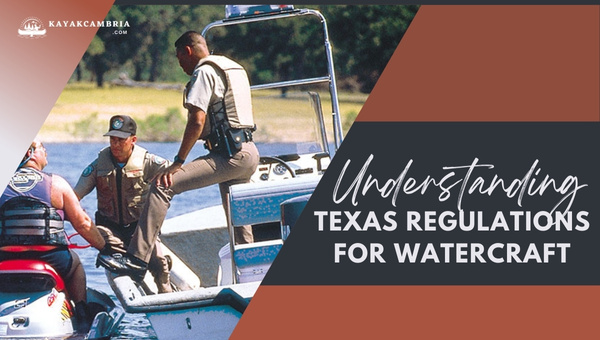
When it comes to enjoying water activities in Texas, it’s essential to be well-informed about the state’s regulations for various watercraft. This knowledge ensures the safety of everyone and helps preserve the beauty and tranquility of our waterways.
Different types of watercraft and their regulations in Texas
In Texas, watercraft are divided into two main categories: motorized and non-motorized. Motorized watercraft include boats and personal watercraft like jet skis, while non-motorized watercraft include kayaks, canoes, and paddleboards. These categories also differ in their registration requirements and other regulations.
Overview of the registration process for motorized and non-motorized watercraft
Motorized watercraft: Motorized watercraft must be registered in Texas to be legally operated in public waters. The registration process involves submitting an application form, verifying boat ownership, paying registration fees, and obtaining registration decals.
Non-motorized watercraft: Contrary to motorized watercraft, non-motorized vessels, such as kayaks and canoes, are not required to be registered in Texas unless they have a motor attached.
General safety requirements and procedures
All watercraft operators in Texas should adhere to safety requirements, which include:
- Life jackets: A personal flotation device (PFD) must be provided for every person onboard, and children under 13 years of age are required to wear one when the vessel is underway.
- Navigation lights: Ensure you have the appropriate lights installed and working when operating your watercraft between sunset and sunrise or in periods of restricted visibility.
- Sound-producing devices: Boats are required to have a horn or whistle with a minimum audible range of half a mile.
- Fire extinguishers: This requirement applies to motorized watercraft. Ensure your vessel has the appropriate number and type of fire extinguishers onboard.
By understanding and adhering to these regulations, you can have a safe and enjoyable time exploring the beautiful waters of Texas.

When deciding to dive into the world of kayaking, one of the first choices you’ll encounter is whether to go for a non-motorized or motorized kayak. Both options have their merits, and understanding their differences can help you make an informed decision based on your preferences and intended use. In this section, we will explore the advantages and disadvantages of both types of kayaks, as well as how their distinct characteristics influence registration requirements.
Non-motorized Kayaks
Non-motorized kayaks are the more traditional choice, powered solely by the strength and skill of the paddler. They offer several advantages:
- Cost: Generally, non-motorized kayaks are less expensive than their motor-driven counterparts. Additionally, you can save on registration, insurance, and maintenance fees that motorized kayaks may require.
- Simplicity: With fewer moving parts, non-motorized kayaks are usually much easier to maintain and more reliable when used properly.
- Fitness: Paddling a non-motorized kayak is a great way to burn calories, build muscle strength, and improve your overall fitness levels.
- Accessibility: Many scenic water trails, shallow areas, and protected places may only allow non-motorized kayaks, ensuring you won’t miss any picturesque views.
Main drawbacks associated with non-motorized kayaks include slower speeds and potential paddler fatigue, especially during long trips.
Motorized Kayaks
Motorized kayaks (e.g., equipped with an electric trolling motor or gasoline engine) come with their own set of advantages, primarily for those interested in fishing or looking for a less demanding paddling experience:
- Speed: Motorized kayaks can travel at faster speeds than their non-motorized counterparts, potentially covering greater distances in a shorter amount of time.
- Ease of Use: With the assistance of a motor, you can navigate through water with less effort and save your energy for other activities, like fishing.
- Stability: Many motorized kayaks have added features to ensure stability when stationary or moving, making them particularly appealing to anglers.
As previously mentioned, motorized kayaks often have associated costs and registration requirements because of their motors, as well as a potentially higher environmental impact.
How Motors Impact Registration Requirements?
In Texas, the main difference between the two types of kayaks lies in the registration process. Non-motorized, human-powered kayaks are not required to be registered. However, once you add a motor – whether it’s an electric trolling motor or a gas engine – your kayak transitions to a different category and registration becomes necessary.
By understanding the distinctions between non-motorized and motorized kayaks, you can prioritize your paddling goals and select the option that best suits your needs. Not only will this decision impact your kayaking experience, but it will also determine your compliance with Texas’ registration requirements, which we will explore further in subsequent sections.
The Simple Answer: Do You Have To Register A Kayak In Texas?
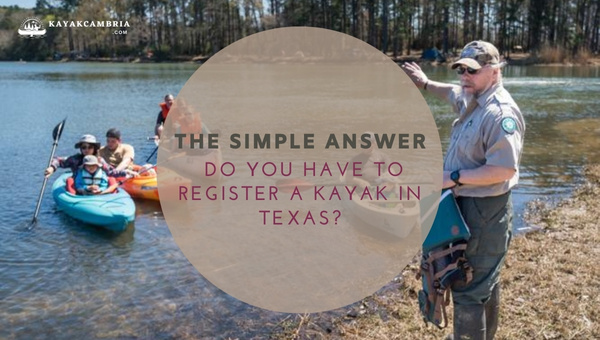
To put it quite simply, no, you do not have to register a non-motorized kayak in Texas. According to the Texas Parks and Wildlife Department, only motorized watercraft are required to be registered in the state. So, if you have a standard non-motorized kayak, you can breathe a sigh of relief knowing that you do not have to deal with the registration process.
However, there’s a catch!
If you own a motorized kayak or decide to add a motor to your otherwise non-motorized kayak, whether it’s electric or gas-powered, you now fall under the category of motorized watercraft, which must be registered. This is the case regardless of the size of the motor. With a motorized kayak, you’ll need to complete the registration process, display the registration number on your kayak, and always carry the required documentation.
In summary:
- Non-motorized kayaks: No registration required
- Motorized kayaks: Registration required
Adherence to these straightforward rules ensures that you stay on the right side of Texas law while enjoying your time on the water.
Registering Your Motor-Powered Kayak In Texas
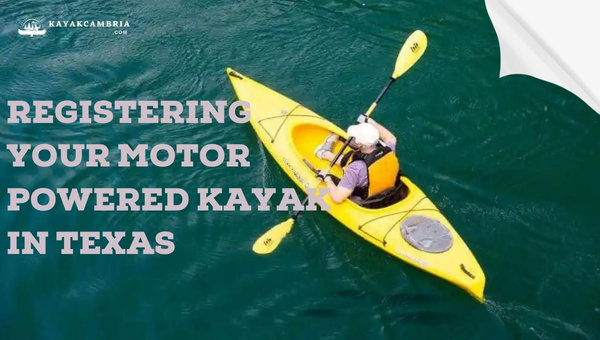
If you have a motor-powered kayak, registering it in Texas is an essential step before hitting the water. The process involves a few important steps, so I’ll break them down for you here to help ensure you are in compliance.
Required Documents
To register your motor-powered kayak in Texas, you will need the following documents:
- Application for Boat Registration, Taxation, and Title form (PWD 143M)
- Bill of Sale or invoice reflecting the purchase price (if bought new or used from a dealer)
- Release of lien (if applicable)
Note that if you purchased your kayak from a private individual, a Bill of Sale, including the hull identification number (HIN), will suffice.
Registration and Fees
The registration process includes paying a fee based on the length of your motor-powered kayak. Here’s an overview of the fees:
| Length of Kayak | Registration Fee |
| Less than 16 ft | $32 |
| 16 ft – less than 26 ft | $53 |
| 26 ft – less than 40 ft | $110 |
| 40 ft or more | $150 |
These fees are subject to change, so always consult the Texas Parks and Wildlife Department (TPWD) website for the most up-to-date information.
Where to Submit the Application
You can submit your registration application and documents to your local TPWD Law Enforcement Office or a participating County Tax Assessor-Collector office. It’s important to know that not all County Tax offices process kayaks and motorboats, so always double-check their services before visiting.
Renewal of Motor-Powered Kayak Registration
Motor-powered kayak registrations are valid for two years in Texas, and it is your responsibility to renew on time to avoid penalties. You can renew your registration online, via mail, or in person at participating County Tax Assessor-Collector offices. Remember to check your registration expiration date and keep your kayak registration up to date.
Once you have successfully registered your motor-powered kayak in Texas, you can fully enjoy your adventures on the water with peace of mind. Just as each time I go and venture out on Texas waterways, knowing that I have taken care of the necessary requirements makes the experience all the more enjoyable and worry-free!
What If Your Kayak Is Registered In Another State?
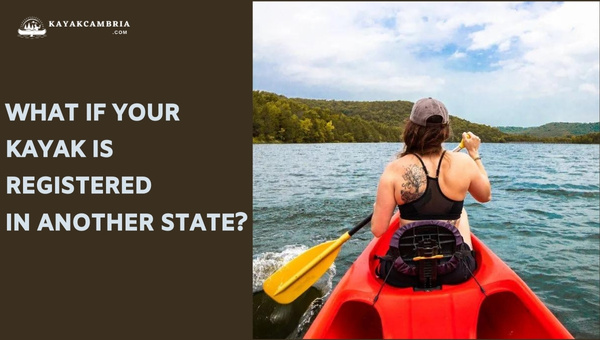
Sometimes, life takes unexpected turns, and while I consider Texas my home now, I’ve certainly enjoyed kayaking in other states as well. If you’ve recently moved to Texas or are just visiting and bringing your kayak registered in another state, it’s essential to understand the state’s requirements to ensure a smooth and compliant experience.
When Can You Use an Out-of-State Registered Kayak in Texas?
In general, Texas allows you to use a kayak registered in another state for up to 90 consecutive days without needing to register it in Texas. As long as your current registration is valid and up-to-date, you should have no problem enjoying Texas waters. However, keep in mind that this applies primarily to motorized kayaks, as non-motorized kayaks usually don’t require registration.
Visiting Texas: Acquiring a Temporarily Use Permit
If you plan to use your motorized kayak in Texas for an extended period (beyond 90 consecutive days) but aren’t planning to move here permanently, it’s wise to look into a Temporary Use Permit. You can apply for one at any Texas Parks and Wildlife Department (TPWD) office. These permits grant you additional time to enjoy Texas waters legally without the need for full registration – just remember, temporary permits also have expiration dates!
Transferring Your Out-of-State Registration to Texas
If you’ve come to call the Lone Star State your new home, congratulations! However, it’s necessary to transfer your out-of-state registration to Texas as part of your relocation process. To do this, visit your local TPWD office, provide proof of ownership, and pay the required fees. Don’t worry; the process is typically quick and painless, and you’ll soon be back to exploring Texas waterways with your newly registered kayak.
It’s essential to always check the local regulations and guidelines when kayaking in a new state, as they may vary and change over time. As a responsible kayaker, make sure you remain compliant with Texas rules, even if your kayak is registered elsewhere.
Public Access Points: Launching Your Kayak In Texas

Once I verified and assured that my kayak met all the state regulations, I couldn’t wait to hit the water! But, before getting too excited, it’s crucial to know where to launch your kayak legally and responsibly. A vital aspect of kayaking in Texas is understanding its public access policies and the various launch locations available for kayakers.
Finding Reliable Launch Sites
Thankfully, there are numerous resources one can use to locate kayak-friendly launch spots. The Texas Parks and Wildlife Department offers an interactive Paddling Trails Map that shows both coastal and inland paddling trails across the state, complete with public launch sites. Moreover, most local municipalities provide guidance on public access points within their jurisdictions. You can also consult local kayak clubs and outfitters for their favorite launching locations.
Etiquette at Public Access Points
Before launching your kayak, remember that access to public properties may have specific rules and guidelines. Adhering to the proper etiquette at these locations is essential to maintain good relationships with landowners, the local community, and fellow kayakers. Some key pointers include:
- Parking: Park your vehicle in designated areas, avoiding blocking any roads or pathways.
- Leave No Trace: Ensure you don’t leave any trash or belongings behind. Keep the areas clean for future users.
- Quiet Zones: Respect the peace and quiet of surrounding communities by avoiding excessive noise at launch points.
- Respect Private Property: Do not trespass onto private property, and always launch from public access points.
Limited Access Areas
While there are plenty of public access points in Texas, certain areas might be restricted or have limitations on the hours of access. For instance, some parks or natural areas may have specified opening times and dates. Therefore, it’s always best to research the latest information for your chosen launch spot to avoid disappointment.
All in all, having a grasp on Texas’ public access points for kayaking is critical for hassle-free adventures. By finding reliable launch spots, respecting the etiquette, and staying informed about the access limitations, you can embark on thrilling kayaking journeys without a hitch.
Life Jacket Laws: Staying Safe On Texas Waters in 2025
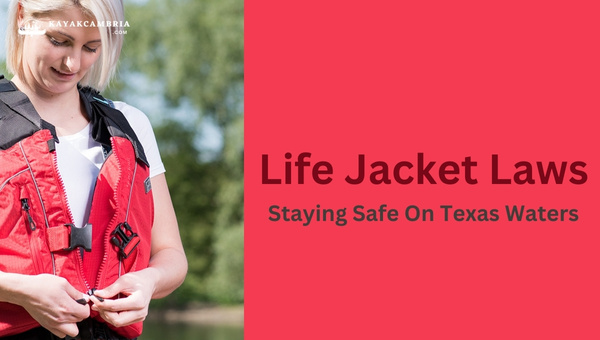
Safety should always be a top priority when it comes to kayaking, and wearing a life jacket is a crucial component of that. In Texas, there are specific laws and regulations regarding life jacket requirements for all watercraft users, including kayakers. Let’s take a closer look at these requirements and the importance of wearing a life jacket while on Texas waters.
Mandatory Life Jacket Requirements
In Texas, all children under the age of 13 are required to wear a U.S. Coast Guard-approved life jacket (also known as a personal flotation device or PFD) while on any vessel less than 26 feet in length. This includes kayaks. However, for adults, there is no statewide mandatory life jacket law applicable to kayaking. That being said, it is always wise to err on the side of caution and wear a life jacket regardless of age.
Importance of Wearing Life Jackets
Life jackets are designed to keep you afloat in case of an unexpected capsize or sudden immersion in water. According to the U.S. Coast Guard, nearly 85% of reported drowning victims were not wearing life jackets. Wearing a life jacket can mean the difference between life and death in emergency situations on the water.
Moreover, kayaking in unfamiliar waters, battling strong currents, or facing sudden changes in weather conditions can make kayaking an unpredictable adventure. Wearing a life jacket ensures that you are prepared for those unexpected encounters on the water.
Selecting the Appropriate Life Jacket
To stay safe during kayaking outings, it’s essential to select the right life jacket that fits well, remains comfortable during long hours on the water, and meets U.S. Coast Guard regulations. Consider the following when selecting a life jacket for kayaking:
- Type: There are five types of life jackets, classified from Type I to Type V. For kayaking, a Type III or Type V life jacket is most suitable as they are designed specifically for water sports and offer a good balance between buoyancy and freedom of movement.
- Size: Properly sized life jackets ensure you remain afloat effectively. Life jacket sizes usually correspond to chest measurements and body weight. So, measure your chest and weight before purchasing.
- Comfort & Fit: It’s vital to try on life jackets and test their fit, as an uncomfortable or ill-fitting jacket may discourage you from wearing it during kayaking trips. Look for adjustable straps to tailor the fit around your body and ensure it doesn’t ride up when you raise your arms. In addition, opt for a life jacket that doesn’t restrict arm movements while paddling.
- Color: Bright colors like orange, red, or neon yellow make you more visible to other boaters, especially in low-light conditions or emergency situations.
Staying safe on Texas waters during your kayaking adventures starts with wearing a proper life jacket. By understanding and complying with life jacket laws and selecting the right life jacket for your needs, you will not only be abiding by Texas regulations but also ensure a safe and enjoyable kayaking experience.
Paddling Permits And Other Kayaking Requirements in 2025
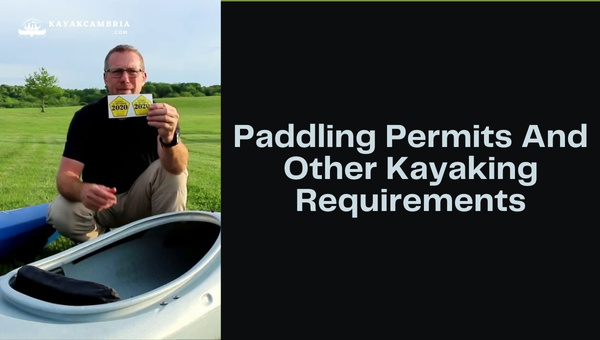
Paddling in State Parks
If you plan on paddling on Texas’ waterways located within State Parks, be aware that you may need to pay an entrance fee or obtain a permit. To check the requirements for a specific park, visit the Texas Parks and Wildlife Department website.
Required Kayak Equipment on Texas Waterways
It’s essential to familiarize yourself with the necessary kayak equipment required by Texas law when you’re on the water. Some mandatory items include:
- Life Jackets: As per Texas law, all boats and watercraft, including kayaks, must carry one life jacket (also called personal flotation device or PFDs) per person. Make sure they are the appropriate size and type for each individual onboard.
- Navigation Lights: If you intend to paddle during nighttime, it’s required to have a white light to show other boaters your position. This can simply be a handheld flashlight, lantern, or even a headlamp worn by the kayaker. Keep the light accessible and ready for easy use.
- Sound-Producing Devices: Texas law mandates that all boats, including kayaks, have at least one sound-producing device onboard. This can be a simple whistle or horn for use in signaling or alerting others of your presence.
Leaving No Trace
While not a legal requirement, it’s essential to practice the Leave No Trace principles when kayaking in Texas. This means being mindful of the environment, disposing of waste properly, and respecting wildlife. Good stewardship is crucial in preserving the natural beauty of Texas waters.
Alcohol Consumption
Being responsible on the water is paramount. Texas law prohibits operating any watercraft, including kayaks, under the influence of alcohol or drugs. So, it’s best to leave the drinks behind and enjoy a sober and safe paddling experience.
Boater Education Course
Although taking a boater education course isn’t mandatory for kayak operators in Texas, it’s highly recommended. The course provides vital information and skills to enhance your safety on the water and your overall enjoyment of the sport. You can find more information and register for a course through the Texas Parks and Wildlife Department.
By understanding the required permits, equipment, and regulations for kayaking in the Lone Star State, you can help promote responsible paddling and ensure a safe and memorable adventure on Texas’ waterways.
Common Kayaking Mistakes To Avoid In Texas

As a kayaker exploring the rivers, lakes, and coastal areas of Texas, you might face various challenges or make small mistakes that could turn your adventure into an undesirable experience. Here’s a list of some common kayaking mistakes and tips on how to avoid them when paddling in the Lone Star State:
Choosing the Wrong Location
Heading out to an unknown location or unfamiliar waters without proper research can lead to potential risks or disappointment. It is crucial to research the area, check the weather conditions, and consult local authorities or fellow kayakers to ensure that chosen destinations are suitable for your skill level and equipment.
Not Adhering to Safety Protocols
Kayaking can be an immensely enjoyable activity, but it can quickly become dangerous if safety protocols are not followed. This includes:
- Wearing a life jacket (PFD): Always wear a personal flotation device (PFD) while kayaking, regardless of how calm the water may seem.
- Checking weather conditions: Make sure you are aware of the local weather forecast and be prepared for unexpected weather changes.
- Carrying communication devices: Always have a form of communication, such as a VHF marine radio or cell phone, in a waterproof case.
- Preparing for emergencies: Always have a well-stocked first aid kit and know how to use it in case of an emergency.
Poor Paddling Techniques
Inefficient paddling techniques can lead to fatigue and strain on your body, making your experience less enjoyable. Take the time to learn proper paddling techniques to ensure efficient energy use and prevent injuries.
Although you may be familiar with a specific paddling route, it’s important to have navigational tools with you, such as a GPS device or a reliable map. Texas waterways can be deceiving, and getting lost can not only waste valuable time but also put you in potentially dangerous situations.
Overloading Your Kayak
Carrying too much gear or improperly stowing it can lead to an unstable kayak and increased risk of capsizing. Make sure to pack your gear according to your kayak’s weight limit and secure it properly.
Lack of Courtesy and Awareness
When going kayaking in Texas, be mindful of the ecosystem, other waterway users, and private property. Respect posted signs, follow leave no trace principles, and always be considerate of other paddlers and boaters.
By avoiding these common mistakes, you can significantly enhance your kayaking experience in Texas and ensure your outings are safe and enjoyable.
Joining The Kayaking Community: Clubs And Events In Texas
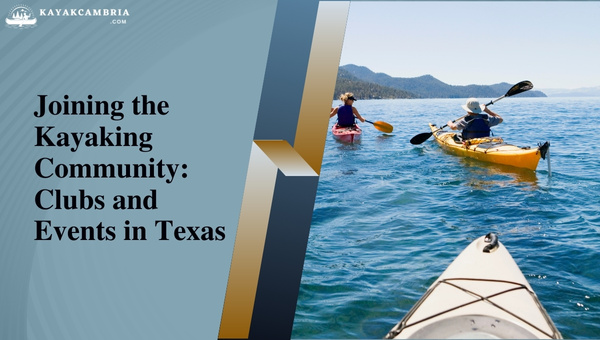
Kayaking Clubs and Organizations in Texas
One of the best ways to enhance your kayaking experience is to join a community or club that shares your passion. Texas is home to several kayaking clubs and organizations that cater to a variety of skill levels and interests. Some clubs to consider include:
- Texas Canoe & Kayak Club
- Houston Canoe Club
- North Texas River Runners
- Dallas Downriver Club
Each club offers a unique atmosphere and opportunities for learning, networking, and sharing experiences with fellow kayakers. Membership benefits often include meet-ups, instructional sessions, group trips, and discounts on gear or classes.
Participating in Kayaking Events in Texas
In addition to clubs, Texas hosts numerous kayaking events throughout the year. These occasions give kayakers the chance to showcase their skills, make new friends, and even support charitable causes. A few well-known events are:
- Buffalo Bayou Regatta – This annual 15-mile race is a Houston classic, offering both competitive and recreational divisions.
- Neches River Wilderness Race – A 22-mile race through the picturesque Big Thicket National Preserve in East Texas.
- Inks Lake Spring Kayak Demo Day – Test out various kayaks and paddleboards at a demo day, hosted by Austin Canoe & Kayak at Inks Lake.
- Lone Star Kayak Series – A competitive fishing kayak tournament series held throughout the year in various Texas coastal locations.
Networking and Resources in the Kayaking Community
Connecting with the kayaking community in Texas, both online and in person, can provide valuable resources, support, and camaraderie. Engaging with other kayakers on social media platforms, such as Facebook groups or Instagram, can help you stay informed about events, destinations, and news.
Meeting fellow kayakers at organized events, launches, or classes can lead to lifelong friendships and reliable paddling partners. By sharing personal experiences, tips, and advice, you’ll not only broaden your own horizons but also contribute to the growth of the kayaking community as a whole.
Joining the kayaking community in Texas by participating in clubs and events can immensely enrich your overall kayaking experience. Embracing opportunities to connect with fellow kayakers, learn from one another, and explore the state’s waters in a supportive environment is a rewarding endeavor you won’t want to miss.
Frequently Asked Questions
1. How do I register my motor-powered kayak in Texas?
To register your motor-powered kayak in Texas, you need to visit a Texas Parks and Wildlife’s office or an authorized registration location. Bring your kayak’s proof of ownership— a bill of sale, invoice, or manufacturer’s statement of origin— as well as a completed Form PWD 143 (Vessel/Boat Application). You’ll also need to pay the required registration fee.
2. What is the cost to register a motor-powered kayak in Texas?
Registration fees are determined based on the length of your motor-powered kayak. The current fees are as follows (subject to change):
– Kayaks under 16 feet: $32
– Kayaks 16-26 feet: $53
– Kayaks 26-40 feet: $110
– Kayaks over 40 feet: $150
The registration is valid for two years.
3. How do I display registration numbers on my motor-powered kayak?
Upon successful registration, you will receive a set of registration numbers and a validation decal. The registration numbers must be displayed in bold block lettering at least 3 inches in height, and they should be clearly visible on both sides of the bow. The validation decal should be placed 3 inches away from and in line with the registration numbers.
4. Do I need a paddling permit when kayaking in Texas?
Most paddling in Texas does not require a specific permit, but some areas have their own requirements. For instance, some parks or wildlife management areas may require a special-use permit or a limited public-use permit to access their waterways. Ensure you check and comply with the regulations in the areas where you plan to kayak.
5. What additional safety equipment is required for kayaking in Texas?
Texas regulations require you to carry the following safety equipment when kayaking:
– A life jacket for every person on board
– Children under 13 must wear life jackets at all times while on the watercraft
– A sound-producing device, such as a whistle or horn
– Navigation lights if kayaking between sunset and sunrise or during periods of restricted visibility
6. Can I use my out-of-state registered kayak in Texas?
Yes, you can use your out-of-state registered kayak in Texas as long as it’s not used in Texas waters for more than 90 consecutive days. If your kayak is registered in another state and you plan to use it in Texas for an extended period, consider obtaining a Texas temporary use permit or transfer your registration to Texas.
Conclusion
It’s essential to familiarize yourself with Texas state regulations and adhere to the specific requirements before setting out on your kayaking adventure. The short answer to the question, “Do you have to register a kayak in Texas?” is no, as long as your kayak is non-motorized. However, if you have a motorized kayak, you’ll need to register it with the state.
Visitors from other states or countries should also be aware of the applicable regulations when using their kayaks in Texas waters, including life jacket requirements, navigational lights, sound-producing devices, and any necessary permits. Furthermore, making use of public access points to launch your kayak legally and respectfully ensures that everyone can enjoy this fantastic recreational activity.
By joining clubs, participating in events, and following proper kayaking etiquette, you’ll become a responsible member of the Texas kayaking community. Keeping up-to-date with any changes in regulations is equally important to make sure you’re always abiding by the law. In the end, one thing is for sure: Texas is a fantastic place to kayak! So, grab your paddle, strap on your life jacket, and explore the beautiful waterways to your heart’s content. Happy paddling, y’all!

